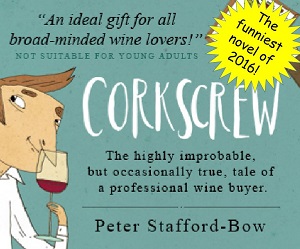 I've been infatuated with Albarino wine since last year's WineStudio's foray into DO Rías Baixas - Spain's unique Galician wine region. Unlike most of Spain, this region is lush with greenery that is fed from 71 inches of annual rainfall. The white Albariño grape dominates DO Rías Baixas with 90% of grape production. And what fantastically fresh, acidic, and minerally driven wines they represent. At a recent Tastemakers Table tasting of Rias Baixas Albarino held at the Succotash Restaurant in National Harbor Maryland, Mark Oldman, author of How to Drink Like a Billionaire!
I've been infatuated with Albarino wine since last year's WineStudio's foray into DO Rías Baixas - Spain's unique Galician wine region. Unlike most of Spain, this region is lush with greenery that is fed from 71 inches of annual rainfall. The white Albariño grape dominates DO Rías Baixas with 90% of grape production. And what fantastically fresh, acidic, and minerally driven wines they represent. At a recent Tastemakers Table tasting of Rias Baixas Albarino held at the Succotash Restaurant in National Harbor Maryland, Mark Oldman, author of How to Drink Like a Billionaire!
The DO Rías Baixas encompasses five distinct sub-regions. Ribeira do Ulla is the newest (formed in 2000) and is the most northern region. Val do Salnés is known as the birthplace of the Albariño grape. This is the original and oldest sub-region and it's fingers reach out into the Atlantic. Soutomaior is the smallest of the sub-regions where the soil is light and sandy over granite bedrock. Condado do Tea (The County of Tea) is named after the river Tea, a tributary of the Miño River which separates the border with Portugal, and is the warmest and driest region. O Rosal also resides against the Miño River -- adjacent to the Atlantic.

 And I'm started to prefer wines from this last region: O Rosal. Their wine contain similar levels of acidity as their brethren but seem to have an enhanced salinity beyond that generated by the granite soils as well as a more rounded profile and floral notes. This preference may have risen from the two O Rosal wines at the Tastemakers Table session which were blends and not 100% Albarino. The 2015 Santiago Ruiz ($20) for instance is a blend of Albarino, Loueiro, Treixadura, Godello, and Caino Blanco - all indigenous grapes to the region. And the 2015 Terras Gauda ($24), which was my overall favorite, is a blend of Albarino, Caino Blanco, and Loueiro.
And I'm started to prefer wines from this last region: O Rosal. Their wine contain similar levels of acidity as their brethren but seem to have an enhanced salinity beyond that generated by the granite soils as well as a more rounded profile and floral notes. This preference may have risen from the two O Rosal wines at the Tastemakers Table session which were blends and not 100% Albarino. The 2015 Santiago Ruiz ($20) for instance is a blend of Albarino, Loueiro, Treixadura, Godello, and Caino Blanco - all indigenous grapes to the region. And the 2015 Terras Gauda ($24), which was my overall favorite, is a blend of Albarino, Caino Blanco, and Loueiro.  There were also a few 100% Albarino at the tasting that impressed our group. The 2015 Pazo De Señoráns ($21) is highly recommended. The winery is is located in the Salnés Valley and is fresh citrus and saline with abundant acids. Also from that region, the 2015 Martín Códax ($15) has similar acidity but a fuller body as it sits five months on its lees. Interestingly this winery is a co-op of 600 family vineyards. Finally, the 2016 Bodegas As Laxas ($20) hits all the notes from their Condado do Tea grapes: heavy peach fruit, high acids, and plenty of minerality. Nicely done.
There were also a few 100% Albarino at the tasting that impressed our group. The 2015 Pazo De Señoráns ($21) is highly recommended. The winery is is located in the Salnés Valley and is fresh citrus and saline with abundant acids. Also from that region, the 2015 Martín Códax ($15) has similar acidity but a fuller body as it sits five months on its lees. Interestingly this winery is a co-op of 600 family vineyards. Finally, the 2016 Bodegas As Laxas ($20) hits all the notes from their Condado do Tea grapes: heavy peach fruit, high acids, and plenty of minerality. Nicely done.







































